Midweek Review
General election: The choice before the electorate
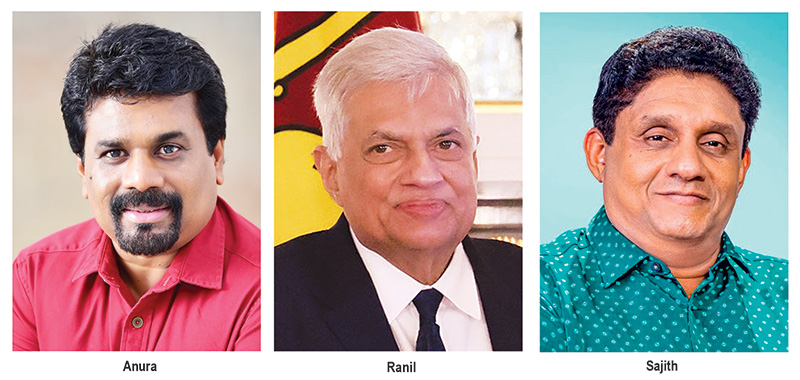
The key issue at the forthcoming parliamentary election should be economic recovery, based on the IMF formula, or whatever an alternative solution that the President AKD-led government can come up with if the existing remedy, already negotiated by the previous regime with one of the twin sisters of Washington, is far too difficult to swallow. All political parties, including the JVP represented in the last parliament, however, agreed to adhere to the IMF formula by endorsing the Economic Transformation Bill. Unfortunately, sufficient attention hasn’t been paid to the primary issue at hand at all as the NPP sought to consolidate its political power. The challenge before the executive and the legislature is how to turn around the ailing national economy to pave the resumption of debt repayment in 2028. None of the political parties in the fray seem to be prepared to face the daunting challenge.
By Shamindra Ferdinando
The National People’s Alliance (NPP) and Samagi Jana Balawegaya (SJB) are the main contenders at the forthcoming parliamentary election. At the last general election, held in August 2020, the NPP won just three seats, including one National List (NL) slot, whereas the SJB secured 54 seats.
The breakaway UNP faction, the SJB that had been registered under controversial circumstances in early 2020, but emerged as the second largest parliamentary group, with the UNP, the Grand Old Party that was reduced to a humiliating one seat and that, too, coming from a NL slot it managed to scrape. The SJB, in its inaugural electoral contest at the previous general election, managed to grab 54 seats, including seven NL members.
The Sri Lanka Podujana Peramuna (SLPP), that won the election, secured a staggering 145 seats, including 17 NL slots.
But within five years, the NPP has turned tables on traditional middle of the road parties that clearly lost their grounds due to succumbing to political expediency for too long, which caused much of the electorate to lose their trust in them, with the NPP rightly playing up all the political chicanery they had been up to over the years. But it has to be mentioned that the NPP is still very much an old wine in a new bottle with its bulwark being the JVP that cannot easily erase its bloody past.
It is now poised to win the parliamentary elections, scheduled for Nov. 14. The NPP intends to win it primarily on the strength of NPP leader Anura Kumara Dissanayake’s (AKD) comparative superlative performance for a Marxist, despite so much fearmongering, rightfully or wrongly, from the established order at the presidential election, even though he couldn’t obtain 50% + 1 of the total number of valid votes.
AKD polled 5,634,915 votes (42.31%) while SJB leader Sajith Premadasa (SP) obtained 4,363,035 votes (32.76%). AKD and SP received 105,264 and 167,867 preferences, respectively. With the preferences, their respective tallies were AKD 5,740,179 votes and SP 4,530,902 votes.
Therefore the masses definitely wanted a break with the past without further political horse dealings and a clear stop to ingrained corruption that is eating into every fabric of our society. In that sense the NPP can now start with a clean slate after the general election, if it maintains the no-nonsense discipline it has shown since the unlikely victory at the presidential election.
At the last parliamentary election, the SJB received 2,771,980 votes, whereas the NPP obtained just 445,958 votes and secured fourth place in terms of number of seats won. NPP’s elected members were (AKD, Vijitha Herath and NL member Dr. Harini Amarasuriya). Although Parliament has been dissolved in the wake of AKD’s victory at the presidential election, Herath and Dr. Amarasuriya constitute the caretaker Cabinet, with AKD as its head.
If we go by the presidential election result, the NPP will be able to obtain 105 seats. If it happens the NPP wouldn’t have at least a simple majority in Parliament. In other words, AKD will be at the mercy of the Opposition. Former SJB parliamentarian Mujibur Rahuman recently declared that the SJB-led Opposition could form a government under the premiership of their leader Sajith Premadasa. The Colombo district contestant asserted that the NPP would end up with 105 seats whereas the combined Opposition could obtain 120 seats. Rahuman is certainly not the only ex-lawmaker to think so. Unfortunately, that would be nothing but wishful thinking. For one thing indications are some key Tamil parties are likely to be in the AKD-led government, after the general election, as they to see the winds of an inevitable and much needed change. EPDP leader Douglas Devananda has already declared his intention to back an NPP government.
Parliament consists of 196 elected and 29 appointed lawmakers. Let me remind readers of the allocation of seats in the last Parliament.
The SLPP obtained 145 (17 NL), SJB 54 (07 NL), Illankai Tamil Arasu Kadchi (ITAK) 10 (01 NL), NPP 03 (01 NL), Eelam People’s Democratic Party (EPDP) 02, Ahila Ilankai Thamil Congress (AITC) 02 (01 NL), Thamil Makkal Viduthalai Pulikal (TMVP) 01, Sri Lanka Freedom Party (SLFP) 01, Muslim National Alliance (MNA) 01, Thamil Makkal Thesiya Kuttani (TMTK) 01, All Ceylon Makkal Congress (ACMC) 01, National Congress (NC) 01, Sri Lanka Muslim Congress (SLMC) 01, United National Party (UNP) 01 NL and the Our Power of People Party (OPPP) 01.
Fifteen political parties were represented in the last Parliament. What would be the outcome of the forthcoming parliamentary election? In spite of the Opposition assertion that the NPP may end up even without a simple majority in Parliament, the ground realities seemed to be quite different.
In addition to the main contenders, there are three other notable political parties in the fray in the South. In the Northern and Eastern regions, the Tamil National Alliance (TNA) is the main party, while the Ceylon Workers’ Congress (CWC) contests Nuwara Eliya district under the UNP’s ‘elephant’ symbol.
UNP leader and former President Ranil Wickremesinghe, though not contesting the general election and also not in its NL, leads the New Democratic Front (NDF). That party had its symbol ‘swan’ changed to ‘gas cylinder’ recently to contest the general election. In spite of never having been represented in the Parliament, the NDF is not an ordinary political party. Since the end of the war, in 2009, the UNP fielded three presidential candidates in 2010 – the then retired General Sarath Fonseka (promoted to the rank of Field Marshal in 2015), 2015 Maithripala Sirisena and 2019 Sajith Premadasa.
Actually Sri Lanka’s type of democracy is a mystery. Having been involved in the UNP-led presidential campaigns in 2010 and 2015 and also part of that camp during the 2009-2019 period, the Janatha Vimukthi Peramuna (JVP) discarded its ‘bell’ symbol in 2019 to field AKD on the NPP ticket at the last presidential. Even prior to that, the JVP has had honeymoons with both Presidents Chandrika Kumaratunga and Mahinda Rajapaksa and helped them gain their electoral victories.
SLPP in tatters
The SLPP that won a near 2/3 majority at the 2020 general election is in tatters. The party had been so weakened, that Namal Rajapaksa (NR), widely believed to be the current SLPP Chairman Mahinda Rajapaksa’s chosen successor, sought the protection of the NL. Having polled just 342,781 votes (2.57%) at the recently concluded presidential election, NR must have realized his inability to re-enter Parliament from the Hambantota district by winning the required votes as a candidate.
At the last parliamentary election, the SLPP polled 6,853,693 votes (59.09%), the SJB a distant second with 2,771,984 votes (23.90%) and the NPP a hopelessly positioned third with a paltry 445,958 (3.84%). What really influenced the electorate to give such a mega boost to the NPP at the presidential election five years later?
The issue at hand is whether the NPP can attract more voters at the parliamentary election than it did at the presidential.
The SLPP has been badly divided into three groups, with the largest joining hands with Wickremesinghe, the failed independent candidate at the presidential election, to contest the parliamentary polls under the ‘gas cylinder’ symbol. Another group that included Prof. G. L. Peiris and Dallas Alahapperuma placed its faith in the SJB, leaving only a handful SLPPers with NR. Quite a number of former SLPPers had decided against contesting this time with the curtain coming down on war-winning President Mahinda Rajapaksa’s political career. Regardless of him putting a brave face the other day by declaring that he would be back and the SLPP could secure a simple majority, the dye was cast in wake of the humiliating defeat at the presidential election.
The possibility of the SLPP being reduced to just one NL seat cannot be ruled out. The UNP suffered a similar fate at the 2020 general election. The UNP that had 106 MPs in 2015-2019 (Yahapalana Parliament) was unceremoniously reduced to just one NL seat.
The SJB, too, despite putting on a brave face, is facing a huge challenge in at least retaining the same number of seats won at the last election. The SJB, beset by internal strife, may not be able to cope up with another heavy defeat at national level in less than two weeks.
Sarvajana Balaya received quite a significant media attention due to Pivithiru Hela Urumaya (PHU) leader and ex-parliamentarian Udaya Gammanpila’s battle with the NPP government over the refusal on the part of the latter to release two Easter Sunday reports commissioned by AKD’s predecessor Ranil Wickremesinghe.
Gammanpila earned the respect of many for taking an unwavering stand in the continuing controversy but it may not help Sarvajana Balaya at the general election. While the Catholic Church has thrown its weight behind the NPP government in continuing to seek justice for victims of the Easter carnage, without being politically neutral, at least in public, UNP leader Wickremesinghe strongly disapproved of the stand taken by the government and the Church. However, the Church has dismissed Gammanpila’s assertions, as well as the much touted committee reports, out of hand. Therefore, the NPP can be sure of receiving the backing of the influential Catholic belt at the general election.
The outcome of the general election must be examined taking into consideration the unbelievably huge number of voters who skipped the presidential election. About 1/5 of 17,140,354 registered voters refrained from voting at the Sept, election. Although some of them had been overseas, political parties, under any circumstances, cannot ignore the danger in a significant group of electors keeping away from polling booths. Of 17,140,354 electors, only 13,619,916 (79.46 %) had exercised their franchise and of them 300,300 (2.2 %) votes were rejected. The total number of valid votes at the presidential election was 13,319,616 (97.8 % of the total polled).
The NPP is confident that at the forthcoming general election it can definitely improve on its performance at the presidential election. Addressing rallies at Katunayaka (Oct. 20) and Polonnaruwa and Trincomalee (Oct. 23), President AKD called on the electorate to wipe out the Opposition at the general election. The writer was present at an NPP rally at Katunayake where AKD explained why the next Parliament should be overwhelmingly dominated by NPP lawmakers.
The NPP leader, who is also the leader of the Janatha Vimukthi Peramuna (both are registered political parties recognized by the Election Commission), said that the defeat of no-confidence motions moved against Ravi Karunanayake (UNP), who, as a Minister giving evidence in the bond scam probe, claimed he could not remember the name of the person who had provided him with a luxury penthouse, and Keheliya Rambukwella (SLPP), in June 2016 and Sept. 2023, underscored the need to overhaul Parliament. That couldn’t be achieved unless the new Parliament was filled by members of the NPP, the President declared.
The Joint Opposition-led no-confidence motion against Karunanayake over the Treasury bond scams was defeated by a majority of 94 votes. The no-confidence motion received 51 votes in favour and 145 against, while 28 didn’t turn up at the time of the voting on June 09, 2016. Among the absentees were Mahinda Rajapaksa and the late R. Sampanthan.
The no-confidence motion moved against Keheliya Rambukwella, on Sept. 08, 2023, over corruption charges, pertaining to the procurement of medicine and surgical equipment, was easily defeated by the Wickremesinghe-Rajapaksa government. The motion received 73 votes in favour, while 113 voted against it.
AKD repeatedly declared that the actions of the MPs resulted in Parliament earning the wrath of the public and widely considered as the most hated institution in the country.
Elpitiya PS result
Comments on the result of the Elpitiya Pradeshiya Sabha election, held on Oct. 26, indicated that politicians and other interested parties took advantage of the outcome to pursue their own agendas. Some asserted that the Elpitiya result meant that the NPP’s decline has started quite early and portends the likelihood of a significant setback for the ruling party at the parliamentary election.
Others asserted that the SLPP has done well at Elpitiya though the party suffered a humiliating defeat at the presidential polls.
Eight registered political parties, and one independent group, contested the Elpitiya Local Government election. The UNP was not among them. The 30-member Elpitiya PS was shared by NPP (17,295/15 members), SJB (7,924/06 members), SLPP (3,597/03 members), People’s Alliance (2,612/02 members), People’s United Freedom Alliance (1,350/01), National’s People’s Party (521/01) and Independent Group (2,568/02).
The NPP polled 17,295 votes whereas the seven registered political parties, and the one Independent Group, polled 19,010 voters.
However, pertaining to Elpitiya, the issue at hand is why out of 55, 643 registered voters only 36, 825 exercised their franchise in spite of growing interest in the general election. Of 55,643 registered voters, 18,818 didn’t turn up to vote.
Having compared the Elpitiya PS result with that of the Elpitiya presidential polls outcome, some have come to the conclusion that the SLPP has made a strong comeback by increasing its percentage of votes from 3.56% to 9.89% while both the NPP and the SJB recorded a drop in their respective percentages.
The security scares caused by the alleged threat on Israeli tourists visiting the east coast continues to dominate the media attention, with the Opposition and various other interested parties, too, seeking to exploit the developing situation.
The Opposition found fault with the government over the way the police and higher security authorities had handled the threat, whereas the incumbent administration stressed that the relevant alert was received on Oct. 07 and local authorities were in the process of addressing the threat when the US Embassy issued a public warning, almost three weeks later.
The crux of the matter is whether the Arugam Bay fallout can influence voters at the forthcoming parliamentary election. The issue has to be examined taking into consideration Sri Lanka’s response to the ongoing Israeli war on Gaza and Lebanon and the extremely dangerous developments in Iran-Israel lethal exchanges and the Houthi threat to international shipping.
Unfortunately, those who find fault with Israel for the continuing bloodshed are silent on Hamas invasion of southern Israel in October last year that created an environment conducive for the Jewish State to unleash war on Gaza and then extend hostilities to Lebanan and Iran with the backing of the US and the UK.
Recently, some interested party posted a video of a pro-Israeli march in Batticaloa. The video was meant to deceive the electorate that the AKD government has allowed such a controversial public display of support for Israel in the wake of the ongoing war and security crisis caused by alleged threat on Israelis here. However, inquiries revealed that the video had been taken in 2015 during the Yahapalana administration. A similar demonstration had been organized in 2019 by the same non-Roman Catholic Church group based at No 118, Bar Street, Batticaloa.
The government should be mindful of the accusations directed by the breakaway JVP faction Frontline Socialist Party (FSP), or Peratugaami pakshaya, regarding the government role in facilitating, what the party called, Israeli military tourism. The FSP insists that the project that had been launched during the Wickremesinghe-Rajapaksa administration posed a major security threat and the new government should re-examine the controversial decision.
The government should pay utmost attention to the developments pertaining to the Arugam Bay security threat or be prepared to face the consequences.
Midweek Review
Impact of US policy shift on Sri Lanka
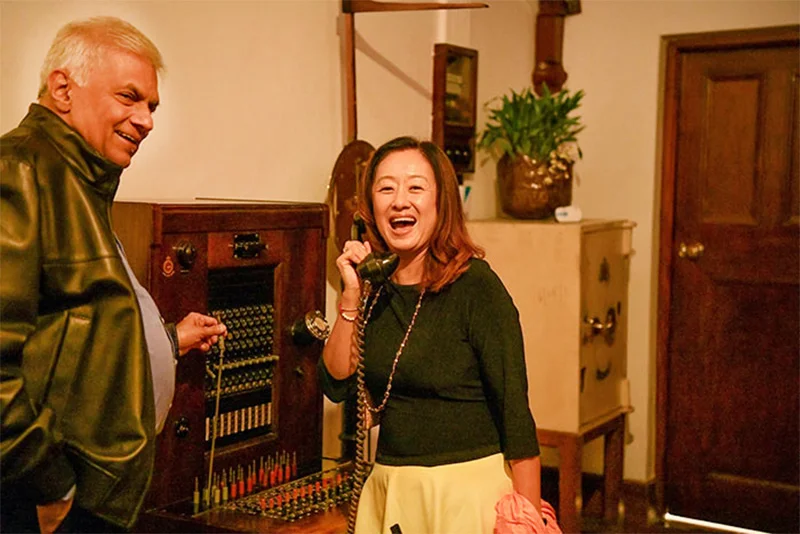
President Trump has unceremoniously overturned US foreign policy. His decision to deport illegal Indian migrants just ahead of a summit with Premier Narendra Modi, underscored the tough stance taken by the new US admiration. The much-touted US-India strategic partnership didn’t deter Trump from carrying out the much-publicized humiliating deportations of Indians. US Vice President J.D. Vance’s speech at the Munich Security Conference, recently, indicated that Trump has terminated his special relationship with Europe and is charting his own course. The upcoming Trump and Russian leader Putin’s meeting stressed that the US policy wouldn’t be shaped by European concerns over Russia. Against that background, the US is very much unlikely to pursue the Biden policy as regards bankrupt Sri Lanka. Actually, Sri Lanka’s political leadership will have to do some serious thinking and re-examining our position as Trump redraws US foreign policy.
By Shamindra Ferdinando
Since the successful conclusion of the war in mid-May 2009, despite all the naysayers, and even the likes of the then British Foreign Secretary David Milliband and French Foreign Minister Bernard Kouchner, rushing here at the eleventh hour with the hope of getting President Mahinda Rajapaksa to halt the offensive to enable them to evacuate the LTTE supremo, his family and their surviving fanatical terrorist band to safety abroad, the US appointed five Ambassadors to Colombo. Of them four were women, namely Patricia A. Butenis, Michele J. Sison, Alaina B. Teplitz and incumbent Julie J. Chung. Between the tenures of Sison and Teplitz, the only male Atul Keshap, of Indian origin, served here for a period of four years (Aug. 2015-July 2018) during the Yahapalana administration.
Ambassador Chung oversaw President Gotabaya Rajapaksa’s forced ouster in 2022. In spite of her denial, Amb. Chung’s role in President Rajapaksa’s removal is clear and cannot be disputed. Amb. Chung will soon be replaced by Elizabeth Kathryn Horst, currently the Principal Deputy Assistant Secretary and Deputy Assistant Secretary responsible for Pakistan, yet another country in which Washington is mired in regime change operations in the region.
Amb. Chung presented her credentials on Feb. 25, 2022, to President Rajapaksa, at the Janadhipathi Mandiraya. The President was flanked by State Foreign Minister Tharaka Balasuriya and Presidential Secretary Gamini Senarath. The new US envoy took office close on the heels of a major crisis within the government that compelled the President to ask for his Secretary Dr. P.B. Jayasundera’s resignation. Just five weeks after Amb. Chung took over the mission, the ‘GotaGoHome’ campaign got underway and a President, elected with over 6.9 mn votes on the SLPP ticket, was thrown out of office within four and half months by violent mobs armed with meticulous intelligence as to which politicians’ houses were to be ransacked and torched, along with those of their close supporters in a matter of a few hours, especially on May 09, 2022. Exactly two months later they completed their despicable mission by storming the Presidential palace.
The SLPP, both in and outside Parliament, accused Amb. Chung of staging the ouster of President Gotabaya Rajapaksa. Award-winning author Sena Thoradeniya (Galle Face Protest: System Change or Anarchy) and (Nine: The Hidden Story) by National Freedom Front (NFF) leader Wimal Weerawansa, MP, dealt with Amb. Chung’s sordid involvement.
However, the writer believes that the whole exercise should be examined as another arrogant US intrusion rather than Amb. Chung’s private agenda. Her job was to do the bidding of Washington. Let me stress that the US made a serious but an abortive attempt to bring President Mahinda Rajapaksa’s reign to an end in 2010. Thanks to Wikileaks we know how the US used a UNP-led coalition, that included the wartime LTTE ally the Tamil National Alliance (TNA), and the JVP, to back retired General Sarath Fonseka at the presidential election. That gamble failed. The war-winning Army Chief ended up with egg on his face with an unforgettable thrashing from the overwhelming southern electorate.
Eyebrows were raised when the outgoing American envoy recently expressed her desire to meet Sri Lanka Podujana Peramuna (SLPP) leaders at the Nelum Mawatha party office as she never bothered to do so since her arrival in early 2022.
Contrary to speculation, the outgoing US Ambassador had sought a meeting about two weeks ago before the unprecedented public exposure about the USAID’s (United States Agency for International Agency) sinister operations here and worldwide in the wake of the new US administration deciding to curtail drastically its operations for being a white elephant as America itself is being confronted with a fast developing and yet to be fully fathomed economic crisis, which might even exceed the worldwide Great Depression that came with the 1929 stock market crash. On her arrival at Nelum Mawatha last Friday (14) Amb. Chung was received by SLPP General Secretary and Attorney-at-Law Prasad Kariyawasam. The SLPP delegation was led by its National Organizer Namal Rajapaksa and one of the three lawmakers in the current Parliament. Having accused her of being in the thick of the regime change, the SLPP’s readiness to meet Amb. Chung, too, is a mystery.
It would be pertinent to briefly explain the USAID’s global objectives as the vast majority wrongly believed the agency is meant for humanitarian work. It is definitely not a charity. Its main objective is to strengthen capabilities of US agents, or assets, at local and regional levels regardless of the status of Washington’s relationship with the targeted country.
These agents, or assets, are available for the US at any time as Washington desired. Pentagon, the State Department or even the Central Intelligence Agency (CIA) used its resources under whatever circumstances. If we closely examine the pattern of USAID operations, as well as other related organizations that had been active here over a period of time, even our legislature is within the sphere of their influence. In other words, they obviously have direct access to politicians and officials who wield power over key institutions. The private sector, too, became part of the US operation carefully expanded countrywide.
By the time Amb. Chung arrived here. US assets were in place at different levels ready to carry out directives. Those who pointed a finger at Amb. Chung never bothered to examine the background and comprehend the gradual build-up that allowed the gathering of all elements, under the social media fuelled ‘GotaGohome’ campaign.
The US mission here had done a tremendous amount of work, especially beginning with the Amb, Keshap’s time, to enhance the capacities of their existing assets and identify and develop new assets.
What really prompted Amb. Chung to suddenly seek a meeting with the SLPP? Did National List MP Namal Rajapaksa’s call for the setting up of a Parliamentary Select Committee (PSC) to probe USAID funding, influence her decision? But that cannot be as the US Embassy made the request before the USAID controversy. Perhaps, SLPP General Secretary Kariyawasam expressed concern over Amb. Chung’s frequent visits to the JVP headquarters at Pelawatte, whereas she ignored the SLPP.
Appearing on a live television programme, Kariyawasam pointed out that Amb. Chung had plenty of time for the JVP, a party with just three MPs, while the SLPP, in spite of being represented by 145 MPs, never received the US envoy’s attention.
Perhaps Amb. Chung didn’t really feel the requirement to visit Nelum Mawatha as she maintained a close contact with the SLPP founder Basil Rajapaksa.
Ambiguity over objectives
It would be pertinent to ask both the sponsors and recipients whether various foreign-funded projects achieved their objectives.
The following are some of the USAID-funded projects launched, beginning 2017: [1] USD 19 mn social cohesion and reconciliation project implemented by Global Communities (July 2018-Dec, 2023) [2] Analysis of social cohesion and reconciliation implemented by US Institute of Peace at a cost of USD 700,000 (Aug. 2018-Feb. 2024) [3] USD 15 mn project implemented by Chemonics International Inc. to strengthen the justice sector, including the Justice Ministry and Office of Attorney General (Sept. 2021-Sept. 2026) [4] USD 17 mn project carried out by National Democratic Institute, International Republican Institute and International Foundation for Electoral System in support of Parliament and other government institutions, including the Election Commission (June 2020 – June 2024) [5] USD 14 mn worth project in support of civil society meant to achieve good governance reforms and strengthen accountability. Implemented by Management Systems International (Feb. 2018-Aug. 2024) [6] USD 7.9 mn scheme to strengthen media implemented by International Research and Exchanges Board Inc. (Aug. 2017-April 2023) [7] SAFE Foundation implemented a programme at a cost of USD 3.9 mn aimed at combating human trafficking (Oct. 2021-Sept. 2026) [8] USD 1.6 mn project to enhance protection for those threatened by gender-based violence (Oct. 2021-Sept. 2026). Implementing agency Women-in-Need [9] USD 3.6 mn project for the benefit of plantation community implemented by Institute of Social Development (June 2022-June 2027) and [10] a staggering USD 19 mn project meant to strengthen the civil society by unnamed private agencies (Sept. 2022-August 2027).
Interestingly, high profile USAID operations implemented in collaboration with successive governemnts covered the Justice sector (Justice Ministry and Office of Attorney General), Parliament as well as the Election Commission.
Over the years USAID with a massive budget that even exceeded the CIA’s and allied organizations have built up a system that served the interests of the US. That is the truth. Sri Lanka has cooperated not only with the US but other organizations, such as the UNDP, to allow them influence in Parliament. The USAID and UNDP have ‘secured’ Parliament by lavishly spending funds on various projects. In spite of spending millions in USD with the 2016 agreement between Parliament and USAID being the single largest project, what they have achieved here is nothing but a mystery.
Successive governments have encouraged USAID, UNDP and other interventions. They felt happy as external sources provided the funding. Let me give an example of how the UNDP stepped-in for want of sufficient public funding for vital government initiatives. Sometimes, they advanced their political project in the guise of helping the government of the day.
On May 13, 2021, the then Attorney General Dappula de Livera, PC, opened the USAID funded state-of-the-training facility that included a boardroom, auditorium, computer laboratory, and other facilities. The outspoken AG also launched an electronic system to track cases and legal files. The launch of the training facility, electronic diary and file management system, and the Attorney General’s Department website were also attended by Supreme Court Judge Justice Yasantha Kodagoda P.C., Acting Solicitor General Sanjay Rajaratnam P.C., the Secretary of the Ministry of Justice M.M.P.K. Mayadunne, and virtually by DCM Kelly and USAID Mission Director Reed Aeschliman.
The US Embassy, in a statement issued on that quoted AG Livera as having said: “This is another first in the 136-year history of the Attorney General’s Department. The opening of the training centre is a notable, salutary achievement that meets a long-felt need for continuous learning and professional development.” The AG was further quoted as having said these new tools would “drive the institution from strength to strength.”
If such facilities were so important why on earth the Attorney General’s Department failed to take tangible measures to meet that particular requirement.
Those who demand investigations into USAID must realize that their role is much more complicated than alleged and reported in some sections of the media. Among the beneficiaries were the Sri Lanka Judges’ Institute.
American Corner in Jaffna
The US Embassy established an American Corner in Jaffna with the collaboration of Jaffna Social Action Centre (JSAC), an NGO that particularly promoted women and children rights. Formed in 2003 in the North as the Liberation Tigers of Tamil Eelam (LTTE) was preparing to launch Eelam War IV, JSAC, over the years, developed into a recipient of US funding. JSAC is among the groups promoting LGBTQ in the Northern and Eastern Provinces. JSAC annually participates in the much-touted 16 Days of Activism Against Gender Based Violence campaign. The then US Ambassador Butenis attended the opening of the American Corner. JSAC, in its website, has revealed an impressive list of partners and donors.
Perhaps JSAC should explain how it served the interests of ordinary people, especially during the 2003-2009 period when the LTTE stepped up forcible recruitment of children, including girls. Forced conscription continued unabated as the military slowly but steadily rolled back the LTTE fighting formations, towards the east coast, until they were trapped in a sliver of land in the Mullaitivu district.
Sri Lanka should be grateful for US assistance over the past decades. The ordinary people benefited from such help but later Washington weaponized the setup as various interested parties queued up to secure lucrative contracts.
Amb, Chung, in late Sept. 2022, moved the American Centre in Colombo, that had been in existence for over seven decades, to the new US Embassy building. This was a couple of months after Aragalaya (March – July 2022) forced Gotabaya Rajapaksa out of office. The American Centre in Colombo had been first located at the Millers Building in Colombo, then at Galle Face Court, followed by Flower Road, before moving to the Sri Ramya at 44, Galle Road.
The American Corner in Kandy was established in 2004. In addition to Jaffna, Colombo and Kandy, there are similar facilities in Matara and Batticaloa.
The recent declaration by Bharatiya Janata Party MP Nishikant Dubey, in the Indian Parliament, that the USAID had been funding organisations with a view to creating unrest cannot be ignored. The BJP’s declaration underscored the gravity of the situation. Those who discarded repeated accusations by National Freedom Front (NFF) leader Wimal Weerawansa as regards US interventions here must take a fresh look at the developments taking place since Donald Trump’s return for a second term.
Dubey alleged the USAID funded organizations that carried out protests against the Agniveer initiative of the government, backed caste census, and supported Naxalism in India.
On behalf of the BJP, Dubey asked for a probe into whether Congress and the Gandhi family-controlled Rajiv Gandhi Foundation had received USAID funds through George Soros’ Open Society Foundations (OSF) for conducting activities, including the campaign for a caste census and against the Agniveer scheme introduced by the government. The MP claimed OSF received ₹5,000 crores from USAID to “break up India”. He raised the issue during zero hour.
The BJP MP’s accusations seemed somewhat surprising as India, under Narendra Modi’s leadership, established close relations with Washington and is a member of the four-country Quad, comprising the US, Australia, Japan and India meant to counter Chinese expansion.
Why subvert India? Is the question in everybody’s mind? President Trump, during a joint press conference with Premier Modi, speculated about the possibility of USAID role in the Lok Sabha elections last year. Perhaps Trump is playing politics even at the expense of the US as he sought to dismantle USAID.
The Trump administration has imposed a global stop-work directive on USAID, suspending most aid initiatives, except for critical food relief programmes.
However, India, too, had been blamed for interfering in internal affairs of other countries. Recently Canada alleged that India intervened in its electoral process. Canada named China as the other offender. India has strongly refuted the Canadian allegation. It would be pertinent to mention that Canada had been playing politics with Sri Lanka for many years as major political parties sought to exploit the post-war developments for their advantage. New Delhi also accuses Canada of encouraging Khalistan separatists operating from there.
Canadian Parliament, in May 2022, unanimously declared that Sri Lanka perpetrated genocide in a bid to appease Canadian voters of Sri Lanka origin.
The expansion of the USAID project here should be examined against the backdrop of Geneva adopting a US accountability resolution, co-sponsored by the treacherous Sirisena-Wickremesinghe government in 2015. The US backed Sirisena’s candidature at the 2015 presidential election. That was in line with their overall strategy to end the Rajapaksas rule, perceived to be China-friendly. The US funded the 2015 UNP-led campaign that involved the TNA and JVP as well. A group of civil society groups, led by the National Movement for Social Justice (NMSJ), backed Sirisena’s candidature, who switched sides at the last moment having been in the Rajapaksas camp throughout his political career and it was done after having a hopper feed with them the previous night.
Having betrayed his own party in 2014, Sirisena has ended up politically irrelevant. That is the price the one-time SLFP General Secretary had to pay for switching sides for personal gain. The former President is most unlikely to get an opportunity to re-enter Parliament ever again.
The NPP will have to be cautious how it handles the situation against the backdrop of developing political and economic upheaval in Washington as we may have never seen hitherto. The way the new administration addressed much more complicated issues, such as the Russia-Ukraine war in a manner seriously inimical to the European powers and pullout from the Geneva-based UNHRC and WHO meant that Trump has already turned US foreign policy upside down.
Midweek Review
Revisiting Humanism in Education:

Insights from Tagore – III
by Panduka Karunanayake
Professor in the Department of Clinical Medicineand former Director, Staff Development Centre,
University of Colombo
The 34th J.E. Jayasuriya Memorial Lecture
14 February 2025
SLFI Auditorium, Colombo
(Continued from18 Feb.)
Tagore had an important answer to the question of whether the economic or the political should enjoy the primacy of place, in designing educational policy. He said: “Economic life covers the whole base of society, because its necessities are simplest and the most universal. Educational institutions, in order to obtain the fullness of truth, must have close association with this economic life.”
Sometimes I have difficulty understanding why Tagore, in spite of his appreciation of science and disdain for superstition, still lavishly exalted his traditional dieties and the scriptures. I think he did so because he saw a remarkable practical utility in them for the organisation of society and because they carried innumerable lessons for human conduct – for which science and technology, or even modern administration, had not yet furnished any suitable alternative.
Besides, it is clear that he admired religion’s potential to bring peoples together. In The Religion of Man, he wrote: “On the surface of our being we have the ever-changing phases of the individual self, but in the depth there dwells the Eternal Spirit of human unity beyond our direct knowledge.” But of course, religion seldom brought humanity together. And whenever it played the divisive role, he did not blindly follow its precepts.
The stickiest issue in India for the modern philosopher is probably its caste system, and Tagore had no qualms about repudiating it:
“…differentiation and separation of vocations and trades, professions and callings on which the caste system originally rested has become totally extinct and it is altogether impossible to maintain it any longer. Yet all the taboos, external restrictions and customs associated with the varna system are still in place, static and intact. It seems we must put up with the cage with all its iron bars and fetters though the bird for which it was made is dead and gone. We provide bird feed every day but no bird feeds on it. In this way, due to the cleavage between our social life and social customs, we are not only being inhibited and obstructed by unnecessary, outmoded arrangements, we cannot live up to our professed social ideals, either.”
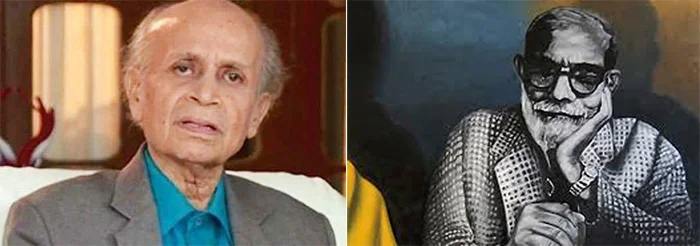
Prof. Carlo Fonseka / Dr. Abrahm T. Kovoor
I wish that for our country, we could replace the phrase ‘caste system’ with our own ‘outmoded arrangements’ – such as astrology, superstitious rituals and harmful so-called healing practices – and carefully re-read that quote. Sadly, our populace is filled with superstition, myth and pseudoscience – as a cursory glance at the supplements of any weekend Sinhala newspaper would show. Here, the high literacy rate actually works against the nation! Our public intellectuals must also take the blame, because they have failed to sustain the good work that had been done in the 1970s by intellectuals like Dr E.W. Adikaram, Abraham Kovoor and Professor Carlo Fonseka.
Another interesting point in his ideas is his desire to see education as a tool for everyone, not just the educated few. Reminding us on ancient Indian education and learning, he said:
“There was a regular traffic between specialised knowledge and ordinary knowledge. Scholars, pundits or learned society did not have an antithetical relationship with the less learned segments of society…There was hardly a place in the country where the Ramayana, the Mahabharata, the Puranic myths and religious discourse did not spread in a variety of ways. Even the theoretical philosophical issues which were rigorously, relentlessly discussed and debated in philosophy and metaphysics always filtered down to the mind of the people…In those days learning was the asset of the entire society and not the acquisition of the learned few.”
In our own country, in contrast, I wonder whether expanded access to education has had a similar effect. In spite of decades of education in swabhasha and wide access to education, knowledge is a tool of separation, seclusion and self-aggrandisement for the few who win the lottery. Is this the fault of the education or the educated? Perhaps both. The educated use their learning as a weapon rather than as a tool to serve, a manifestation of the fierce competitiveness and the fixed mindset that pervades the successful products of our education. At the same time, as Tagore pointed out, it is the fault of education too:
“The rains of our education are falling a long distance away from where the roots of our whole life lie…Our ordinary daily life has no use for the education we acquire…It is unjust to blame this on students. Their world of books and the world in which they live everyday are poles apart…That is why it is seen that the same person who has formidable erudition in European philosophy, science and ethics tenaciously clings to the age old superstitions…We are no more amazed when we see that on the one hand he is separately enjoying literature full of varied sentiments while on the other he is busy only with making money…”
These are a few fundamentals that can be gleaned from Tagore’s second phase. They aren’t many, and perhaps they aren’t as earth-shattering as one might expect. But I feel that they are exactly what we are lacking today and prevent education from playing a nation-building role. If we can get these right, we actually need to get very little else right.
Phase 3: ‘Freedom from bondage’
Tagore’s role and position as an unrepentant internationalist at the time when India was demanding swaraj is well known. He was opposed to nationalism, and in fact correctly identified colonialism itself as a manifestation of the nationalism of the British – so he asked, if one were anti-colonialist, how could one be nationalist also?
But his internationalism was not a rootless existence floating aimlessly in the air. He was clear that one must be rooted in one’s own soil, strongly and firmly – it is from here that one must reach out to the wealth of the world. In another beautiful simile, he urged us not to fear the wind, and to open the windows of our house to let that wind in. He would assure us that we would be able to retain the good that the wind blew in and get rid of the bad. He also said that as long as our house had a firm foundation, the wind will not blow it away. So for him, the first step of being an internationalist is studying one’s own soil and placing a firm foundation for one’s existence. He admired and studied tradition without being a traditionalist.
With regard to Indian universities of his day, he lamented the fact that these were European grafts and nothing like India’s ancient intellectual heritage, such as Nalanda, Wikramshila or Takshasila. He lamented the type of intellectual this would produce. He wrote in 1932:
“We receive European learning as something static and immutable and consider it the height of modernity to cull and recite sentences from it. For this reason we lack the courage to reconsider it or think about it from a new angle. Our universities have nothing to do with and are cut off from the acute questions, dire necessities and extreme hardship facing the people of the country…Like parasites our mind, attached to text books, has lost its ability to find its food and invent by itself.”
These words seem no less relevant to our own universities, 90 years after they were written.
Tagore’s belief in internationalism and its effect on his philosophy of education is captured by his description of Visva-Bharati, the higher education institute he set up in 1921 using the Nobel Prize money: “Visva-Bharati represents India where she has her wealth of mind which is for all. Visva-Bharati acknowledges India’s obligation to offer to others the hospitality of her best culture and India’s right to accept from others their best.”
Conclusion
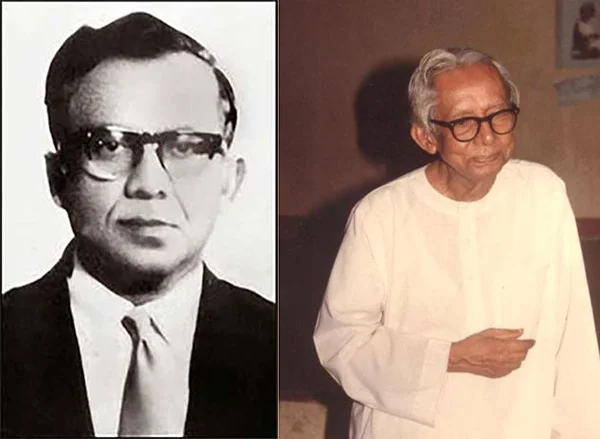
Prof. J. E. Jayasuriya / Dr. E. W. Adhikaram
Ladies and Gentlemen: I am afraid time would not permit me to cover the whole breadth of Rabindranath Tagore’s complete educational philosophy, and I wouldn’t even pretend to cover it in depth. For example, I didn’t touch on other important aspects that Tagore spoke of, such as school administration, advice for teachers, maintaining discipline without corporeal punishment, carrying out research and promoting creativity, women and education and so on. Forgive me for only scratching the surface. But the topic of Tagore’s educational philosophy is so vast that nothing wider would be possible in a short time.
You will also note that my talk was not filled with anecdotes of incidents and peculiarities at Santiniketan – like how classes were conducted under trees or how the gurudev once conducted a class in the rain for cattle when the students didn’t want to come out and get wet. These are not the timeless substance of the tale; they are only its time-sensitive ornaments.
If, on the other hand, I have been able to whet your appetite for his educational philosophy, and also convinced you that he had patiently worked on and presciently invented an antidote to today’s problems of education, I would be content for now. Balance was his antidote. My goal this evening was to place the seeds of his ideas in your minds, and hope that they will grow, be nourished and be pruned and manicured into a contextually appropriate shape in the months or years to come.
Selected bibliography
Dasgupta, U. (2013). Rabindranath Tagore: A Biography. Oxford University Press. (Translated by hiisß ckl l=udr- mßj¾;l (2024).rúkaøkd;a ;df.da¾-udkj ksoyi iy úúO;ajh kqf.af.dv iriú m%ldYlfhdaව)
Dore, R. (1976). The Diploma Disease: Education, Qualification and Development. London: George Allen & Unwin (republished in 1977 by Institute of Education, University of London).
Gunasekara, P. (2013). moaud .=Kfialr – kkaofiak .%duSh wOHdmk l%uh^1932-1939) lkakka.r;=udf.a wu;l l< fkdyels w;ayod ne,Sula fld<U iQßh m%ldYlfhda: කන්නunasekara, S.P. (2012). iuka mqIamd .=Kfialrම(2012). rúkaøkd;a ;df.da¾ fld<U tia f.dvf.aසහiyifydaorfhda(Basedon Rabindranath Tagore: The Myriad Minded Man (1995) by Krishna Dutta and Andrew Robinson, and other works.)
Illich, I. (1970). Deschooling Society. USA: Harper & Row (republished in 1973 by Penguin Education, Harmondsworth, England).
Iyengar, K.R.S. (1987). Rabindranath Tagore: A Critical Introduction. London: Oriental University Press.
Kripalani, K. (1961). Tagore: A Life. New Delhi: National Book Trust, India (author publication, republished in 1971 by National Book Trust, India).
Maithra, S., translator (2014). Education as Freedom: Tagore’s Paradigm. New Delhi: Niyogi Books.
Navaratnam, R. (1958). New Frontiers in East-West Philosophies of Education. Calcutta: Orient Longmans.
Neogy, A.K. (2010). Santiniketan and Sriniketan: The Twin Dreams of Rabindranath Tagore. New Delhi: National Book Trust, India.
Samuel Ravi, S. (2024). Philosophical and Sociological Bases of Education (2nd edn). Delhi: PHI Learning. (Chapter 13: ‘Rabindranath Tagore’, pp. 163-179.)
Sarathchandra, E.R. de S. (1942). ‘Through Santiniketan eyes’. Kesari People’s Weekly (Jaffna) serialised from 2(9) to 2(17) and compiled by Goonetileke, H.A.I., also available translated to Sinhala ^iqpß; .ï,;a-mßj¾;l ප(2001). ශYdka;s ksfla;kfha weiska fld<U tia f.dvf.a iy ifydaorfhda).
Venn, G. (1965). Man, education and work. In, Cosin, B.R., editor: Education: Structure and Society. Harmondsworth: Penguin Books. (Chapter 6, pp. 97-107.)
Venn, G. (1971). Preparation for further preparation (editorial). Educational Leadership 1: 339-341.
Midweek Review
Posy for the Unsung
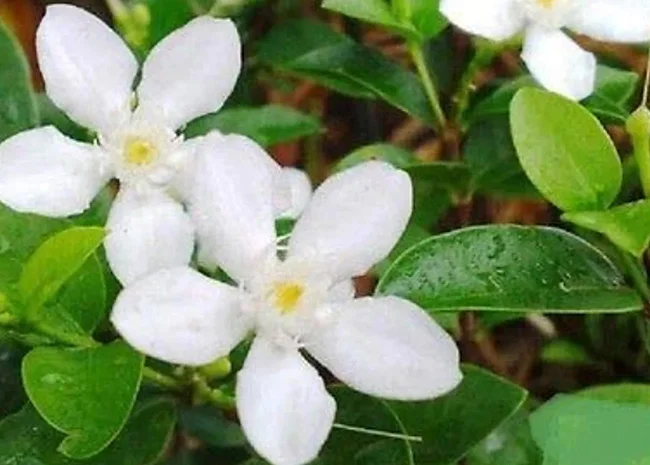
By Lynn Ockersz
You may call it a pilgrimage,
This yearly trudge she undertakes,
A posy of dainty flowers in hand,
To a rock-pile on a secluded hill,
Reeking of the graveyard’s silence,
Which covers her son’s remains,
Whom they bound and whisked away,
With dozens of other angry young men,
To a high place where elders say,
They were made to dig their graves,
At the point of smoking Ak-47 guns,
But all that scores of mothers such as her,
Have earned for their long nights of pain,
Are yellowing number tags for the missing,
Issued within stone walls of official silence.
-
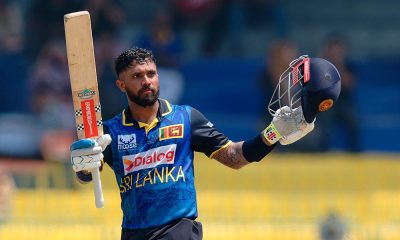
 Sports5 days ago
Sports5 days agoRemarkable turnaround for Sri Lanka’s ODI team
-
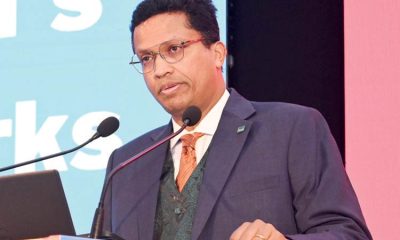
 Business5 days ago
Business5 days agoUN Global Compact Network Sri Lanka: Empowering Businesses to Lead Sustainability in 2025 & Beyond
-
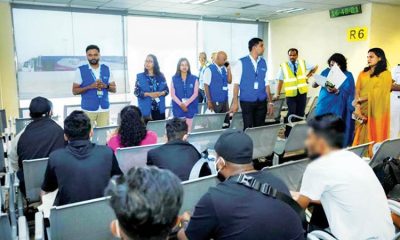
 Features5 days ago
Features5 days agoScammed and Stranded: The Dark Side of Sri Lanka’s Migration Industry
-
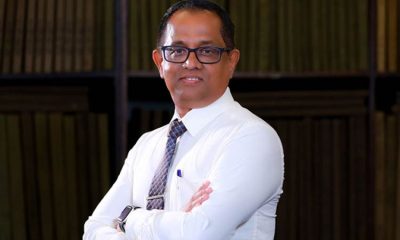
 News6 days ago
News6 days agoSpeaker agrees to probe allegations of ‘unethical funding’ by USAID
-
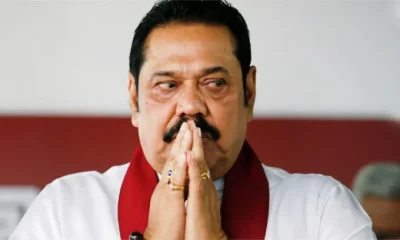
 Features4 days ago
Features4 days agoDon’t betray baiyas who voted you into power for lack of better alternative: a helpful warning to NPP – II
-
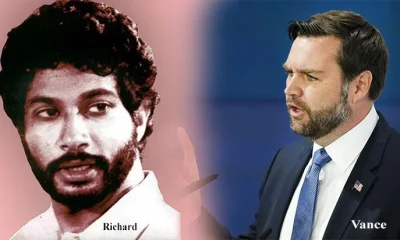
 Features4 days ago
Features4 days agoTwo films and comments
-

 Features7 days ago
Features7 days agoClean Sri Lanka and Noise Pollution (Part II)
-

 Editorial6 days ago
Editorial6 days agoCoal giant awakes, but uncertainty prevails











